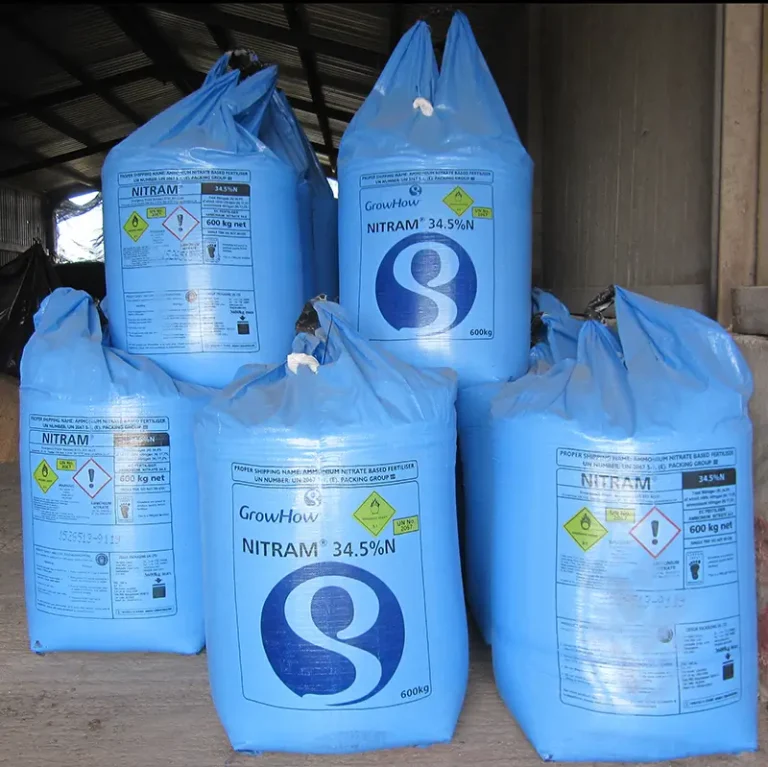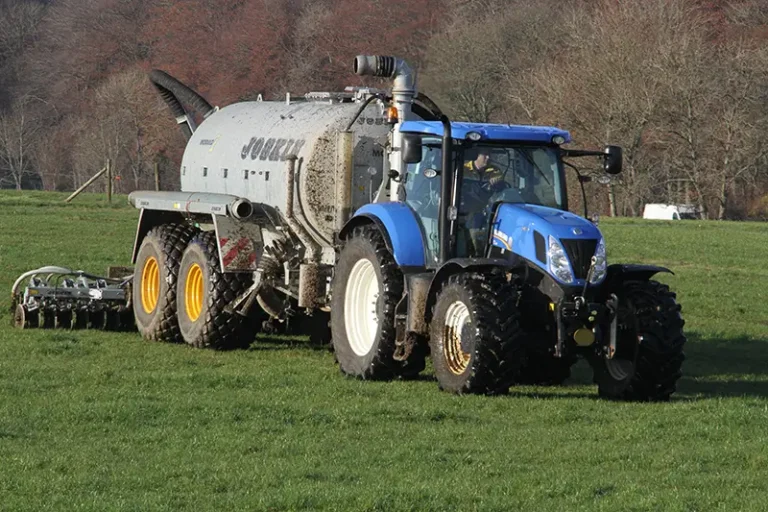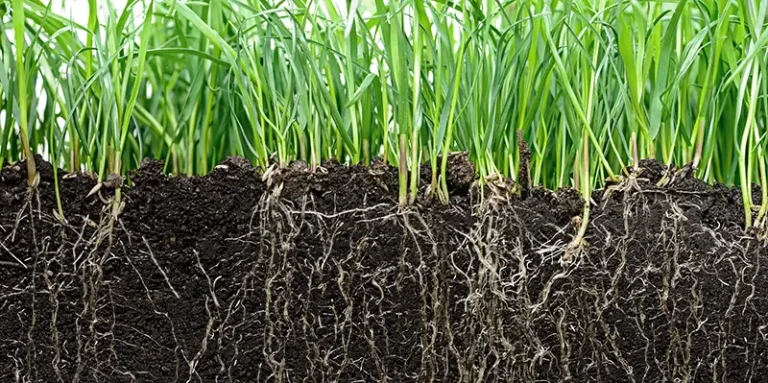by Professor Jonathan Leake
Agrochemicals, including crop protection products, fertilisers and lime, contribute direct greenhouse gas emissions through the use of fossil fuels in manufacture, packaging, transport and their application to fields using diesel-powered tractors.
Once applied to fields, nitrogen fertilisers can contribute additional greenhouse gas emissions from nitrous oxide (N2O), as can animal manures, urine and slurries. Agricultural lime (ground limestone CaCO3) releases CO2 on dissolution to neutralize soil acidity, while the burning of limestone to produce quicklime (CaO) and hydrated lime (Ca(OH)2 has already released this CO2.
Synthetic agrochemicals have been estimated to contribute more than 1% to UK greenhouse gas emissions. However, some of these emissions may be offset by increased CO2 fixation by crops and grasslands, carbon sequestration into soils, and reductions in N2O fluxes, for example due to liming, so the net overall greenhouse gas fluxes of different inputs need to be considered.

Artificial nitrogen fertiliser
Crop protection products
The combined contributions of herbicides, fungicides, insecticides, molluscicides, and growth regulators are estimated to comprise only about 3% of the total greenhouse gas emissions in arable cropping.
There are significant uncertainties in these estimates, but exact measurements may not be critical as these emissions are typically offset by a very large margin through better crop performance taking more CO2 from the atmosphere. Consequently, emissions are avoided by not having to replace lost yield with cultivating and fertilising more land. For example, fungicides applied to the main UK arable crops have been estimated to decrease annual greenhouse gas emissions by over 1.5 Mt CO2e.
However, increasing over-reliance on a small number of crop protection products is selecting for resistance genes in weeds, pests and diseases. This is undermining both their effectiveness and their capacity to offset the emissions from manufacture and use.

Low emissions slurry injection equipment. © kevinmillinercountryside.co.uk
Fertilisers
Most of the greenhouse gas emissions from chemical inputs to agriculture comes from use of nitrogen (N) because of the large quantities used, for example 191 kg N/ha on managed agricultural land in England, and the high fossil-fuel energy intensity and greenhouse gas emissions in N fertiliser manufacture. This is typically 4-8 kg CO2e per kg N for ammonium nitrate, but it can be reduced to about 3 kg CO2e per kg N by catalytic reduction of nitrous oxide (N2O) released during nitrate production using current technologies.
Further reductions in fertiliser production emissions are plausible by use of renewable energy sources to produce ammonium. However, for farmers using fertilisers, the main challenge remains the problem of soil denitrification, releasing N2O at rates that typically more than double the overall greenhouse gas release from current production and use of N fertiliser.
Agriculture is the main source of nitrogen pollution of air and water, and this arises mainly from low efficiency of uptake of applied N fertiliser and organic manures.
Lifecycle analysis of the production of a loaf of bread in the UK shows the importance of optimising nutrient use, as 66% of the greenhouse gas emissions arise from growing the wheat, with N fertiliser alone estimated to contribute 43%. This assumes ‘best practice’ in the nitrogen use efficiency of the crop of 71%, which is considerably above the 55% average efficiency across all types of managed agricultural land in England in 2018.
Low efficiency of fertiliser use involves substantial avoidable costs to farmers and avoidable emissions and pollution. A key priority for reducing on farm greenhouse gas emissions is to improve N use efficiency, including that of organic sources such as manures, composts, biosolids, and anaerobic digestate, and to minimise losses, especially those leading to N2O release.
In the arable sector, precision N fertilisation using soil testing and crop sensors can improve the effectiveness of timing and spatial targeting of applications, to meet crop requirements. Timings of applications should be informed by medium-range weather forecasting and soil moisture assessments to minimize risks of N2O losses from nitrate fertilisers and NH3 losses from manure and slurry applications.
Such efficiency gains are likely to benefit from ongoing improvements in weather forecasting, soil moisture sensing, satellite remote sensing of crops, how manure and organic wastes are deployed, and use of nitrification inhibitors. However, the effectiveness of precision fertiliser application is often constrained by poor soil health, especially by depletion of organic matter. This reduces soil pore space and infiltration rates, increasing susceptibility to compaction and poor drainage which restrict root growth, thereby reducing nutrient uptake efficiency and increasing losses.
In addition, there is a role for increased cultivation of nitrogen fixing legumes to decrease N fertiliser demand and its associated emissions, although significant amounts of N2O may still be released, for example, on ploughing up legume-rich leys.
Nonetheless, the reintegration of legume-rich leys to arable rotations may confer multiple benefits from improving soil structure, organic matter content, enhancing nutrient and water use, and climate resilience by the following crop.
Substantial efficiency gains in N fertiliser use are achievable in the UK livestock sector, through much wider utilisation of soil testing to inform N fertiliser application rates and ensure other nutrient limitations do not constrain uptake.
Priorities for improving management and application of manures and slurries include the use of slot injectors. This reduces the volatilisation of ammonia by 70-80%, thereby increasing nutrient use efficiency, without increasing N2O emissions to an extent that undermines these benefits. However, it is important to avoid soil compaction, potentially by using umbilical systems with tankers parked on field tracks so their weight does not pass over a field.
As in arable cropping, timing of applications to match plant demands and suitable soil conditions to minimize risks of N2O release can improve efficiency and reduce greenhouse gas emissions from pastures.
Replacing sown ryegrass pastures that require high N fertiliser inputs to maintain production, with species rich herbal ley mixtures that include nitrogen-fixing legumes, can simultaneously improve livestock health and productivity while reducing N fertiliser use by 45% from 163 kg/ha to 90 kg/ha. Such species mixtures grown with 150 kg N/ha have been shown to reduce N2O emissions by 24-58% compared to ryegrass monocultures grown with 150 and 300 kg N/ha respectively.

Future directions and priorities
Reducing greenhouse gas emissions from agrochemical use involves decreasing inputs and improving efficiency, strongly aligning with other environmental and sustainability goals including reducing air and water pollution, enhancing soil quality and biodiversity, thereby delivering multiple societal benefits. The most urgent priorities are to increase N use efficiency from both fertiliser and organic nitrogen sources such as manures and slurries and reducing N2O emissions.
Improving soil health, especially soil crumb structure, macropores and soil organic matter will be central to achieving nutrient use efficiency gains, coupled to growing crops and grasslands with deeper and more effective roots.
Correcting soil acidity using lime improves root growth and soil structure, increases yields of many crops, decreases N2O release by about 20%, and can increase soil carbon sequestration. However, the greenhouse gas benefits of lime are typically balanced by emissions generated by the mining, processing and reactions of lime in soils.
One promising alternative approach to increase soil alkalinity, reduce N2O release, and sequester CO2 is the application of calcium and magnesium rich silicate rock dust the weathering of which ultimately removes CO2from the atmosphere through the precipitation of soil or ocean carbonates. If ground basalt is deployed, it releases a suite of plant-essential elements such as phosphorus and potassium, which substitutes part or all of the requirements for fertilisers containing these elements, and the 0.5-0.7 kg CO2/kg emissions associated with the mining and production of these fertilisers.
As highlighted later in this report, there are significant opportunities in arable and livestock farming to reduce greenhouse gas emissions by improving efficiency and reducing costs and environmental impacts of agrochemical inputs, through a combination of approaches that include improving soil quality, reducing N fertiliser losses, and limiting overreliance on crop-protection products.
